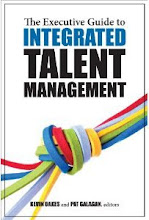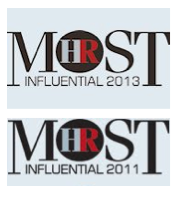 Melcrum have published results from a new employee engagement survey.
Melcrum have published results from a new employee engagement survey.
It contains a couple of interesting findings, and some good analysis of how, from a communication perspective, organisations can improve engagement.
Findings first:
- In most organisations, engagement is just a general philosophy incorporated into the organisation's people practices (54%) rather than being a formal, dedicated engagement programme (27%). This is lower than I might have thought. Engagement is such a critical aspect of human capital in any organisation, and is so poor in many, that it deserves to be treated as a strategic, long-term, heavy investment programme. And I don't know what to say about the 13% of large organisations where it's not on the agenda at all!
- HR generally has responsibility for overseeing engagement (40%), slightly ahead of internal communication (27%). And I think it's a positive sign that 13% give responsibility to a designated employee engagement team. Just one thing, I would advise giving accountability to these functions too.
- As shown in the graph, senior leaders are more important drivers of engagement than direct supervisors in small organisations (34% vs 23%) but not in large ones (23% vs 25%). I've already posted on the difference between production and knowledge workers and this difference between large and small organisations seems intuitively right as well.
- Most organisations measure engagement through standard opinion surveys rather than dedicated research. I think this is a worry as these organisations will be less well informed about the drivers of engagement within their own organisations that those that follow a more bespoke approach. I'll come back and post more about this in the next few days. Once again, I'm left speechless thinking about the 23% of organisations that don't measure engagement at all.
The second section of the report deals with the communication techniques used by organisations to address engagement issues. In order of popularity, these are:
- Action teams (55%): Linda Dulye explains that these cross-functional employee work teams address critical, red flag issues and recommend measurable, workable solutions. "Team findings and recommendations are presented, face-to-face, to company top management during a day-long working session. The session - which is attended by highest ranking managers of the division or company - is characterized by open dialogue and rapid-fire decision making. Every recommendation surfaced by the employee teams receives a go or no go decision by management. The session concludes with timelines drawn up for the integration of endorsed actions into a master plan. Subsequently, the master plan becomes the responsibility of the teams and management to jointly implement, track and measure impact on a sustained basis." The team is responsible for the ongoing results which drive the ultimate engagement.
- Storytelling (49%): Tony Quinlan explains "Storytelling is a misnomer. It conjures up the image of a passive audience sitting listening to someone with the charismatic, persuasive power to entrance them. It revolves around a carefully-constructed story designed to carry you out of the day-to-day to somewhere else and change your thinking while you're there. What is on offer here is more powerful and more positive than that simplistic view. And while it involves storytelling throughout, some of the greatest opportunities for employee engagement lie in listening to stories, not telling. The real power and opportunity for using stories in organisations is in listening to stories, helping others to create their own authentic stories and making sense of the stories told." I don't personally get much out of non-contextual parables, but stories based upon real experiences in organisations have huge power to resonate with people's own experiences and gain an emotional and very real response.
- Appreciative inquiry (29%): Caryn Vanstone explains that "Appreciative Inquiry can be defined as the art of discovering and valuing those factors that 'give life' to an organisation, group or individual – those things that support and enable the best examples of peak performance. It is more than a method; it is a philosophy, or a way of thinking, which leads to a new way of working together – one which is not centred on eradicating the causes of deficit and problems." I'd agree. I've only used discover / dream / design / destiny in developmental workshops but I use AI's strength based who system approach in most of what I do.
- Message maps (19%): David Grossman explains that this is a "messaging tool to guide individuals and organizations in creating clear, credible and compelling messages that drive awareness, understanding and action. The process of developing a messagemap helps align management to the core messages for an initiative and results in a blueprint of all the key messages that can be used to populate various communication tools — which eliminates unnecessary revisions and saves significant time." Mmmm, I've had a go using similar things myself (as someone participating in a process, not a leader or facilitator of it), and I've not been that impressed. And I'm surprised that 19% of organisations report having used them.
They key to all of this of course, is to be clear about what you're trying to change, to understand the context within your own organisation, and then pick the right techniques for this particular set of circumstances. Pilot to check you've got the right approach, and then stick at it. Too many organisations move onto the next new thing before they're really seen any change take place. These four approaches all have their place, but use them appropriately.





























29% using appreciative inquiry is excellent news. Do you know of anyone using it here in the UK?
ReplyDeleteFor anyone interested, the main AI site is here.
http://appreciativeinquiry.case.edu/